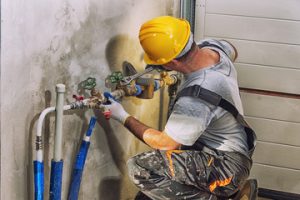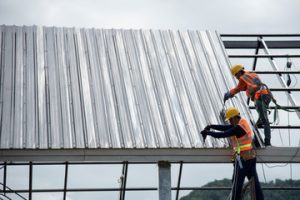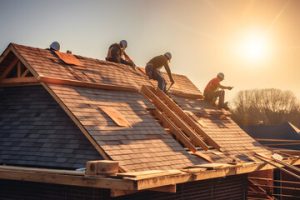Plumbing services are essential for homeowners and businesses. Problems like leaky pipes or clogged drains can quickly turn into costly disasters without proper repair.

Learn how to start your own plumbing company with the right business model and insurance coverage. Get started by registering your business name, choosing a legal structure, and obtaining the necessary licensing and permits. Contact Ranger Plumbing Company for professional help.
A plumbing contractor is responsible for the installation of various water supply systems, sewer lines, and plumbing fixtures like sinks, toilets, tubs, showers, and drains in residential and commercial buildings. In addition to technical plumbing skills, they must also possess strong business acumen to manage clients’ expectations and ensure that projects are completed within budget. This includes preparing detailed proposals, managing finances, and marketing services effectively. A degree in construction management can help in this regard.
Plumbing contractors may work on new construction projects as part of the building team or may help with repairs to existing structures. Regardless of the type of project, they must ensure that code compliance and safety are met. They must also be aware of the different materials that are available and their suitability for a given job. Choosing the right materials can help reduce maintenance costs in the long run.
When selecting a plumbing contractor, it is important to check their references and reviews. These can provide valuable insight into a plumber’s work ethic, reliability, and professionalism. Ideally, look for contractors with a high number of positive reviews and a proven track record in the industry.
Another important consideration when choosing a plumbing company is insurance coverage. General liability insurance is a must for any plumbing business, and it can help protect against claims of property damage, bodily injury, advertising injuries, and lawsuits. A typical policy costs around $115 per month or $1,378 annually. It is also a good idea to consider workers’ compensation insurance, which can cover medical expenses and lost wages for employees that are injured on the job.
Finally, it is important to choose a reputable plumbing company that provides transparent pricing for their services. This can help avoid any misunderstandings or disputes with clients over billing. In addition, it is a good idea to select a plumbing company that offers flexible payment options and can accommodate different types of budgets. In addition to this, a plumbing company should have a solid understanding of the local codes and regulations that apply to their industry.
Residential Plumbing
Residential plumbing is the service of maintaining the water systems, appliances and drains within residential dwellings like houses, apartments and condos. Residential plumbers can work on any number of things, from unclogging toilets and repairing leaky faucets to installing new fixtures and even whole-home plumbing upgrades. They can also work on gas plumbing, which involves the maintenance of heating units that provide hot water to household appliances and fixtures.
It’s important for homeowners to understand how their home plumbing works, so they can identify and resolve issues as soon as possible. This knowledge empowers them to take a proactive approach to keeping their plumbing in working order, which helps save money on energy bills and reduce the risk of costly repairs.
Most people don’t give much thought to their home plumbing until something goes wrong, but the truth is that there are many aspects of residential plumbing that can go wrong, and it’s not always easy to tell what the issue is without a professional inspection.
Licensed plumbers can diagnose and repair a wide range of problems, from clogged toilets to broken water heaters. They can also handle more complex jobs like rerouting sewer lines or fixing underground pipes. In addition to plumbing, a good residential plumber can also install and maintain water softeners, garbage disposals, and even whole-home water filtration systems.
The difference between residential and commercial plumbing is that commercial buildings must adhere to stricter health and safety regulations than private homes. These requirements can dictate everything from pipe size to drainage requirements. A commercial plumber must be well-versed in these regulations to ensure that their work is up to code and meets industry standards.
Commercial projects are typically larger than residential ones and require more detailed planning. They also often require the use of specialized materials and adherence to stringent building codes and standards. As a result, they can be more expensive than residential projects.
The complexity of a commercial project can also affect the quoting process. For example, a commercial plumber may need to access plans and drawings during off-hours when the building is closed, which can make it more difficult to estimate costs accurately. Luckily, tools like Groundplan allow for 24/7 access to project plans and improve communication, transparency and efficiency on both sides of the table.
Commercial Plumbing
Commercial plumbing deals with the water infrastructure of large buildings like office complexes, malls and hospitals. This system has to cater for a larger number of people using the facilities at any given time compared to residential properties. This means that the plumbing has to be made from more durable materials and is capable of handling increased levels of usage.
Additionally, plumbing systems in commercial buildings are required to adhere to stricter standards for health and safety. This often requires additional tests and inspections such as thermostatic valve testing, backflow prevention testing, trade waste treatment, and more. This makes it crucial to only work with a certified, experienced, and competent commercial plumber.
When looking for a commercial plumber, it is best to ask around and get recommendations from professional networks. This will help you find a contractor that is well-versed in the intricacies of plumbing for commercial settings and has an impressive track record to show for it.
A reliable commercial plumbing company will be able to provide comprehensive services for the entire plumbing system of your building, including installation, maintenance and repairs. These professionals can also handle specialized installations and equipment that may be needed for specific industries or establishments. For example, factories or hospitals may require high-pressure water pumps, multi-component sewage systems, industrial pipes, and more.
Moreover, commercial plumbers should be well-versed in local and state regulations regarding plumbing. This includes understanding the requirements for permit procurement, plumbing code compliance, and budgeting concerns when carrying out plumbing installations in a commercial property. It is essential that a commercial plumber has in-depth knowledge of these regulations to ensure the safety of all occupants and prevent costly legal disputes in the future.
Commercial plumbing also involves routine service maintenance to catch and repair any issues before they escalate into larger problems that could cost more money to fix. These services are usually offered as part of a service agreement that provides the customer with peace of mind while providing the contractor with a steady stream of income.
Emergency Plumbing
Your plumbing system is vital to your everyday life, so when something goes wrong with it you need it fixed fast. Whether it’s a leaky pipe, clogged drain, or major water damage, emergency plumbing services can help. These problems don’t wait until business hours and often happen at night or on the weekends when plumbers aren’t available.
Aside from reducing your risk of property damage and water waste, having an emergency plumber on call can also save you money in the long run. These specialists can address serious issues like sewage backups, flooding, and major pipe bursts that could otherwise cause costly damage to your home or business.
When to Call an Emergency Plumber
Not every plumbing problem is a true emergency, and it can be difficult to determine whether or not you should call for help right away. But, there are a few key things you should keep in mind to help you decide whether or not to call for assistance:
Water Leaks
A common sign of a plumbing issue is water leaking from any of your fixtures or from underneath your house. If left unattended, this can lead to costly water damage and even structural damage to your home. A plumber can assess your situation and recommend the best course of action for repairing the leak.
Clogged Drains
While it may seem like a minor inconvenience to have clogged drains, they can actually be quite dangerous for your health and the condition of your home. Not only can blocked or slow-moving drains prevent you from using your sinks, showers, and toilets, but they can also become breeding grounds for bacteria and mold. Emergency plumbers can use a variety of tools to help you get your drains back up and running smoothly in no time.
Frozen Pipes
As the temperature drops, it’s important to have your pipes properly insulated and winterized to avoid them bursting during the cold season. When this happens, it can be very costly to repair and will disrupt your daily routine. An emergency plumber can assess your pipes and advise you on the best solution to fix them quickly.








